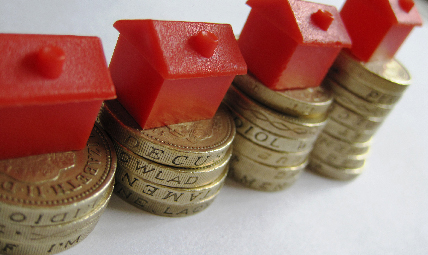Dr Franz Fuerst of the Department of Land Economy recently conducted a study for the Department of Energy and Climate Change which confirmed a link between a home’s energy efficiency and its sale price. Here, he explains his team’s methodology.
On 18 June we published research that, for the first time, confirmed a link between a home’s energy efficiency and its sale price in the UK. This means that in addition to lowering energy bills, improvements such as wall insulation, double glazing or efficient boilers can also help to achieve a higher resale value compared to similar properties which are less efficient.
Compared to dwellings rated Energy Performance Certificate (EPC) G, dwellings rated EPC F and E sold for approximately 6% more, dwellings rated D sold for 8% more and dwellings rated EPC band C for 10% and A/ B sold for 14% more than the worst-rated dwellings. When investigating the relationship between dwelling price appreciation and EPC rating, the evidence is less clear-cut but remains generally supportive of a positive association.
This is the first large-scale empirical study of the effect of energy labelling on property residential property prices in England. Our results are based on transactions involving more than 300,000 dwellings which sold at least twice, taking into account sale prices, dwelling attributes, detailed information on EPC ratings and a host of socio-economic area variables.
While we do not claim that an econometric study such as this one, can pinpoint the exact monetary value-added of energy efficiency in each case, we have endeavoured to be as meticulous as possible when building our statistical model. A crucial factor for the success of this study was the inclusion of the main determinants of house price. For example, modern properties might sell at a higher price regardless of their level of energy efficiency. There are certain property attributes that are important determinants of price: size, location and type of dwelling being the more obvious ones. Energy efficiency, although growing in importance, is currently only a secondary factor in most purchasing decisions.
Given that there is a negative relationship between a home’s age and EPC performance, we ensure that the complex interaction of age, size and type (detached, terraced etc.) on dwelling prices are carefully addressed by not only including these as explanatory variables but by measuring price on a square metre basis rather than the total price of a property.
Following the release of this study, a number of critical comments have doubted the existence of an energy efficiency price premium and claimed that homebuyers often do not even ask for the EPC information and that the EPC was not sufficiently accurate as it is essentially an estimate based on the assessor’s inspection visit rather than the result of an in-depth energy audit of the entire property.
Notwithstanding these critical points, there appears to be a consensus that the EPC is the main tool for providing information on the level of energy efficiency to prospective buyers. Furthermore, prospective buyers can usually obtain information on the type of heating system, loft and cavity wall insulation from the estate agents and/or sellers. The fact that EPCs give an indication of the energy efficiency grade of a property rather than show precisely what savings can be expected should not detract from the potential for house price savings.
A fair price for these energy-saving features will be achieved in most cases, i.e. energy savings are generally capitalised into house prices, even if some of the buyers are not well informed or do not even care about these features.
The regional variation in price premiums is another interesting point. The study attempted to control for as many variables as possible that explain difference in property prices. Some regions, such as the South East, can be influenced by other factors that have not been controlled for. A likely reason is that property prices are heavily influenced by location to commuter links, where the price impact of energy efficiency is masked by this effect. It does not imply there is no impact of energy efficiency, only that the model has not detected it. Hence, the price premiums are likely to vary according to factors such as climate and temperature, as well as householders’ income levels and the underlying market conditions.
Separate estimation of the house price effect of EPC ratings for each region reveals that the percentage premium commanded by properties with above-average EPC ratings is higher in regions where house price levels are low and vice versa. It is likely that this is due to the fact that broadly similar energy savings across regions had quite different relative effects on house prices.
By contrast, sale price premiums in the North East and North West of England may seem surprisingly high. However, there are a number of factors at play that may explain these figures. Firstly, upgrading to double-glazing, renewing the heating system, adding an extension or converting a loft invariably involve improving the energy efficiency of the dwelling. It was not possible in this work to completely separate out the value added by home improvements in general from energy efficiency improvements in particular. We intend to do this in follow-up work.
In summary, we find some support for an existing link between EPC ratings and property prices but this does not mean that this link is perfect in all regional markets. To be sure, every study, no matter how thorough and large-scale, has its limitations which we hope to have pointed out. Nor does our study support the claim that current energy efficiency levels are already at their optimum and that there is no need for further private and government initiatives aiming to increase the general energy efficiency levels of the British housing stock.
Photo credit: Houses on UK Money, by Images Money via flickr
Tags: energy efficiency, EPC, housing, insulation, property values, UK











